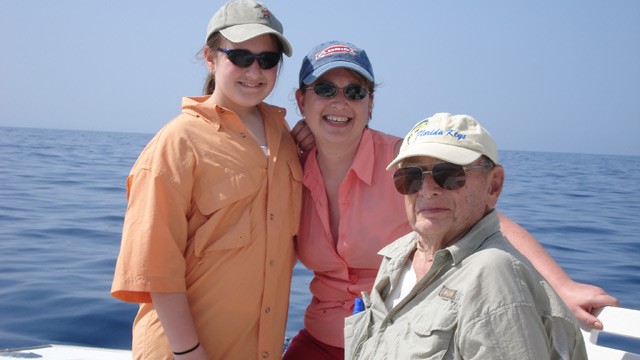So far, Lisa Salberg has lost seven family members to an insidious heart disease, a medical mystery that took four generations of tragedy to unravel.
Her great-great uncle, an Irish immigrant, mysteriously dropped dead at the age of 19 in a New Jersey iron mine a century ago. At 50, her great-grandmother died of "dropsy" -- an old-fashioned term for the accumulation of fluid associated with heart failure.
Salberg's grandfather had a heart murmur and died at 43. Her father missed a date with her mother because he had to administer CPR to his dying father. Salberg's aunt died at 36 of "the flu." Another aunt died of a stroke at 52. And an uncle died of heart failure at 48.
Fast forward to the mid-1970s: Salberg's sister Laurie was properly diagnosed with what looked like the cause of death of so many in her family, hypertrophic cardiomyopathy (HCM), or an enlarged heart.
Her death in 1995 hit Salberg the hardest, as she struggled to raise Laurie's children along with her own newborn daughter.
"I don't know how many there are, but we are dropping like flies," said Salberg. "The pieces came in dribs and drabs, and it took years to get the information imparted. There was no connecting the dots."
Their father was diagnosed with HCM in 1989 and died in 2008.
"It affected generations of people and it's everywhere in my family," said Salberg, 44, who got her diagnosis in 1979.
Salberg's now 17-year-old daughter, as well as Laurie's children, her niece, 28, and nephew, 30, also have HCM. Several cousins also have the disease.
Cardiomyopathy is a familial disease that primarily affects the muscle of the heart. With HCM, the normal alignment of muscle cells is disrupted, a phenomenon known as myocardial disarray. It also causes disruptions of the electrical functions of the heart and, depending on whether it obstructs the outflow of the heart from the left ventricle, can be obstructive or nonobstructive.
HCM is an autosomal dominant genetic condition, which means the mutation only needs to be passed down from one parent. Because cardiomyopathy is a spectrum of diseases, each person is affected differently.
The disease is "actually pretty common," affecting about 1 in 500 Americans, said Dr. Sripal Bangalore, assistant professor in cardiology at NYU Langone Medical Center in New York City. An estimated 600,000 Americans are living with the disease.
Celebrities With Heart Problems
"A lot of people walking around lead a normal life into their 70s and 80s with no problems," he said. "At the other spectrum, young athletes die while playing sports."
Often there are no symptoms, so the disease is diagnosed by evaluating family history. Children at risk should have an echocardiogram to see if the heart muscle is enlarged. That must be repeated every five years until adulthood and is not always conclusive. Many doctors do not recommend genetic testing because of its complexity – there are more than 1,000 genes associated with cardiomyopathy.
Treatments may include medications like statins, beta blockers and calcium channel blockers; surgery to burn away the thick part of the heart muscle; and implanted defibrillator devices.
HCM is best known as the disease that strikes young athletes in their prime. It gained attention in 1990 with the death of 23-year-old Hank Gathers, a basketball star at Loyola Marymount University in Los Angeles.
According to a 2003 review published in the New England Journal of Medicine, HCM is the leading cause of sudden death among athletes, accounting for roughly a quarter of deaths.
But it more commonly causes sudden death off the athletic field, according to Salberg, who founded the New Jersey-based Hypertrophic Cardiomyopathy Association (HCMA) to raise awareness of HCM and provide support to those with the condition. For 17 years, Salberg has connected families with leading researchers at academic hospitals and medical centers nationwide.
Healthy 6-Year-Old Suffers Sudden Cardiac Arrest
In the United States alone, approximately 250,000 people die every year from sudden cardiac arrest, according to the Centers for Disease Control and Prevention. Approximately 10 percent of SCA events occur among people less than 40 years of age.
Most die in schools, work places and at home, far from hospitals with lifesaving equipment. Salberg has spearheaded successful legislation in New Jersey to get CPR and automated external debrillators (AEDs) in the schools and supported national efforts for sudden cardiac arrest drills.
Salberg and NYU's Bangalore don't recommend universal testing of athletes, although those diagnosed with HCM should avoid vigorous activities.
"If you screen 10 to 15 million people, it's a big cost," said Bangalore. "It's not a cost-effective strategy. The number of young athletes who die is small -- less than around 100."





No comments:
Post a Comment